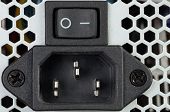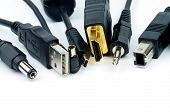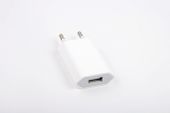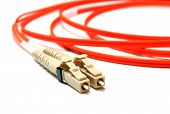What are Power Connectors?
Power connectors, in the broadest sense are any devices that allow power to be delivered from a power source to a component. There are many different types of power connectors available, however, given the wide range of applications in which they have to be used.
The plug that plugs appliances into your wall sockets, the specialized connectors inside the case on your computer and the battery cables that connect your battery to your car are all different types of power connectors. When speaking about electrical components, however, there are generally specific types of power connectors that are being discussed. These power connectors have properties that make them suitable for specific uses and, very importantly for industrial applications, for usage under very trying conditions.
Every type of power connector provides a way to have a power supply that is separate from a component. Even in a battery−powered device, there will be a power connector that couples the output of the battery to the input of the electrical device. A power connector can be a very primitive, easy to understand device or it can be designed in a way that is very complex, completely preventing it from being hooked up to the wrong power source or the wrong load.

What is the Physical Principle Behind Power Connectors?
A power connector runs on simple conductivity principles. It consists of a conductive material and some sort of an adapter that allows a power supply to be interfaced with a load.
Some power connectors are rated to ensure that they are not installed to power supplies that the devices that they power are not able to handle. For instance, if you take the example of a simple electrical plug as a power connector, you'll find that some appliances do not recommend that you use an extension cord – another type of power connector – along with the electrical appliance. The amount of current traveling along the power connector – the cord – may end up being so extreme that it could heat the cord, potentially causing a fire or another disaster.
Power connectors also have to have insulating properties, in the vast majority of cases. On a wall socket, the power connector is wrapped with an insulating material and designed so that it is very difficult for the user to come into contact with the metal leads that actually make the connection. In order to do so, the user would have to plug the connector partway into the socket and then make the effort to somehow come into contact with those metal prongs. The current design utilize for wall sockets is one of the longest lasting and, in fact, one of the safest, despite the simplicity of its design.

What are Automotive Connectors?
Automotive connectors come in many different shapes and sizes. Many of these connectors are designed so that they can provide multiple hookups for the various low current electrical circuits found in automobiles. In addition to this, these power connectors are fine examples of power connectors that are designed to hold up to specific types of conditions. They are generally made out of materials that are resistant to the petrochemicals found in the areas of a vehicle where they are likely to be installed and they are also designed to hold up to the rugged weather conditions that every car is sometimes put through.
What are Compact Power Connectors?
Compact power connectors come in many different varieties. Just as the name implies, however, they are designed to be used in equipment where the power connectors need to be as small and nonintrusive as possible. These are typically supplied with various safety features that prevent people from coming into contact with the actual leads. These may utilize a variety of different output and input configurations to accommodate different designs.
What are DC Power Plugs?
Look around you and you will likely find many different examples of DC power plugs. One of the most familiar will be the power plug on the back of a modem. These come in many different designs, commonly with a cylindrical metal design that is designed to plug into a specific type of pin.
DC power plugs are typically utilized with a transformer plug – oftentimes called a wall wart – that transforms the voltage down to an acceptable level for the appliance in question. This is why it's always important to take a look at the transformer and the power output before plugging in any DC power plug to an electrical device. Giving the wrong amount of power could be disastrous.
What are DC Power Sockets?
DC power sockets are the receptacles for DC power plugs. These are usually easy to identify by the single prong in the center of the cylindrical shaped socket. They are typically sized differently to accommodate different types of adapters, which plug into the wall current, change the alternating current to direct current, transform the voltage down to an acceptable level and then output the correct voltage and current into the power plug. The socket, because it will be designed to accommodate only one type of plug – in the vast majority of cases – ensures safety by not allowing any improper amount of voltage or current to be put through the device.

What are DIN 43650 Solenoid Connectors?
DIN 43650 plugs feature a four prong design and are largely utilized in industrial applications. These are available from electronic component dealers and are generally rated for higher voltages. The oftentimes have a safety feature that allows them to be screwed down onto a socket.
What are Energy Saving Power Devices?
Energy−saving power devices utilize a variety of different strategies to reduce the total amount of power that they consume. These have become very popular over the past few decades, as consciousness about power consumption and its effect on the environment and people's increasing awareness of the amount of money that can be saved in business and home electrical use by utilizing power saving devices has become a more significant motivator in consumer and business decision−making.
What are Hazardous Area Power Connectors?
When you're working in an area that is not suitable for electrical appliances, you need to rely on safety equipment to allow electrical appliances to be utilized without excessive amounts of danger. This is where hazardous area power connectors come into play, among other components.
Hazardous area power connectors typically have safety features on them that make them safer for workers and other people in areas where water, environmental contaminants and other hazards may be an issue. These power connectors typically affix very snugly to the socket, preventing water or anything else from getting inside of them. They may also be made out of materials that are resistant to specific contaminants, preventing the insulation from breaking down. In addition to this, some of these power connectors can be physically affixed to the socket in a way that prevents them from being removed accidentally. These, and other, safety features all make it possible for workers in dangerous areas to utilize electrical components.
What are Heavy Duty Power Connectors?
Heavy−duty power connectors are generally designed to carry more power than household current. These are oftentimes extremely sturdy devices that affixed to whatever power supply they utilize in a way that prevents them from being torn out or otherwise damaged. They may utilize threaded connectors or other devices to ensure a proper and snug fit.
Not all heavy−duty power connectors are big, bulky devices, as the name might imply. Some heavy−duty power connectors are simply outfitted with devices that hold them in place very securely. An example of this would be the double screw connector that holds some power cords in place on the back of computers in network rooms. They may not be carrying huge amounts of current or voltage, but the power connectors they use are able to hold up to a lot of abuse.
What are Heavy Duty Power Connector Kits?
For electricians installing heavy−duty power connectors, it's sometimes much easier to get everything in one kit. A heavy−duty power connector kit comes with everything an electrician needs to hook up a heavy−duty power connector, usually including the plug, the socket and any other devices that go along with it. These simply make it a lot easier to get something connected and to ensure that all the hardware being used is compatible with all the other hardware.
What are Industrial Interlocks?
Industrial interlocks are safety devices that are utilized to prevent a machine, an electrical circuit or some other piece of industrial equipment from coming online accidentally. They are generally used in situations when a worker has to access the machinery or the electrical circuit involved and where somebody accidentally changing the state of that machinery or circuit could result in injury or death for the worker working on the machine.
These are oftentimes used in conjunction with what is called a tag out program. In such a program, a block is used to secure a switch and a tag giving the name of the person who locked that switch out is affixed to the switch itself. This way, there is never any mystery as to whether or not the switch was accidentally locked out. Many industrial interlocks have only one key available when they are being used to ensure that nobody else has a way to unlock the device, change its state and possibly cause an injury or a death.
What are Industrial Power Connectors?
If you ever go into any kind of industrial building, you'll be readily aware that the machinery in use generally uses far more power than house mains could supply. Industrial power connectors are designed to handle these high−power circuits. They oftentimes have connectors that connect to one another very securely to prevent accidental disconnections or other damage.
What are Industrial Power Connector Adapters?
Industrial power adapters allow the high−power outlets in industrial settings to be modified to distribute power over several different machines or for other purposes. There are many different types, most of which are sold by electronic component manufacturers and supply houses.
What are Lighting Connectors?
Lighting connectors are designed to provide a safe form of electrical connection for various types of lighting. The most obvious example are light sockets, which provide a way to connect a light bulb to the house mains.

What are Modular Battery Contacts?
Modular battery contacts provide a way to connect one or more batteries to an electrically powered device without individually connecting all of them. They are typically designed so that the batteries are lined up side−by−side and, when this is done, so that all the connections are in the proper alignments. These are very common devices; they're seen on everything from flashlights to battery−powered radios and just about every other type of battery−powered device.
What are Solar Connectors?
Solar connectors are designed specifically to work with solar power sources and the devices that they provide electricity to. They come in many different designs. Some of them actually affixed to a window and provide a standard electrical outlet connector that can operate battery chargers and other low−voltage devices. Other solar connectors are very large, heavy devices that are designed to be integrated with arrays of solar panels so that power can be delivered from the solar panels to the house and, if there is an excess, back to the power grid.
Product spotlights
Motion Sensor
An electronic device capable of converting the movements it senses into electrical signals.
Rocker Switch
One of the most common method of using a rocker switch is on a light switch, but they are in quite a few other devices and applications as well including surge protectors and appliances.
Strain Gauge
Stretching a strip of conductive metal will not only make it longer and thinner, it will result in an increase in electrical resistance from one end of the strip to another.
Screw Extractors
Screws have significant advantages over nails in certain applications.